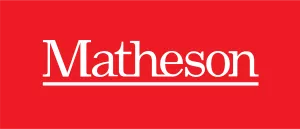- within Media, Telecoms, IT, Entertainment, Compliance and International Law topic(s)
Readers of our previous eZines will be aware of the ongoing saga of the appropriate price control obligation for MTRs for the six Irish mobile service providers designed with significant market power (SMP). In late 2012, ComReg proposed the use of a benchmarking approach - based on practices in seven other EU Member States which employed a bottom-up Long Run Incremental Cost (LRIC) methodology - to set MTRs for operators designated as having SMP in the market for mobile voice call termination.
Vodafone challenged ComReg's decision D12/12 in the High Court, and Cooke J found against ComReg in respect of ComReg's use of benchmarking. Accordingly, ComReg was forced to go back to the drawing board and build a cost model to determine appropriate maximum MTRs for the six Irish mobile operators concerned. Cooke J however postponed any ruling on Vodafone's challenge to the validity of the use of pure LRIC as the appropriate cost model. Instead, Cooke J left the door open for an appeal, stating that he intended to wait until ComReg had built its cost model before reaching a decision as to its suitability in the market. In the meantime, ComReg appealed the part of the High Court's decision which found in favour of Vodafone to the Supreme Court. However, it may take many years before the appeal is heard by the Supreme Court.
ComReg has now issued a consultation setting out the parameters for its BU 'pure' LRIC cost model. The consultation is accompanied by a report, prepared by Deloitte & Touche, supporting ComReg's draft financial model. Interested parties have until 5pm on 23 May 2014 to respond to the consultation. The consultation represents a preliminary stage in the building of the model. A decision on the model is planned for later in the year. The consultation and model follows data requests and workshops with the six SMP mobile service providers – the draft model is guided by actual operator data where this was made available by operators, and ComReg's own estimates were used where operator data was not available.
The draft model calculates the maximum MTR for Ireland on an annual basis as follows:
- 0.64 cent per minute for 2014;
- 0.60 cent per minute for 2015;
- 0.57 cent per minute for 2016; and
- 0.53 cent per minute for 2017.
The maximum rates above represent a significant drop from the original maximum MTR which was 1.04 cent per minute. The above rates are also significantly less than the interim maximum MTR which Vodafone was ordered to be charged from 1 July 2013, namely 2.6 cent per minute.
However, all this good work may go to waste – operators may decide to challenge ComReg's Pure BU LRIC model once it is finally ready – and it remains to be seen what the High Court will make of it pending the Supreme Court appeal.
The content of this article is intended to provide a general guide to the subject matter. Specialist advice should be sought about your specific circumstances.


